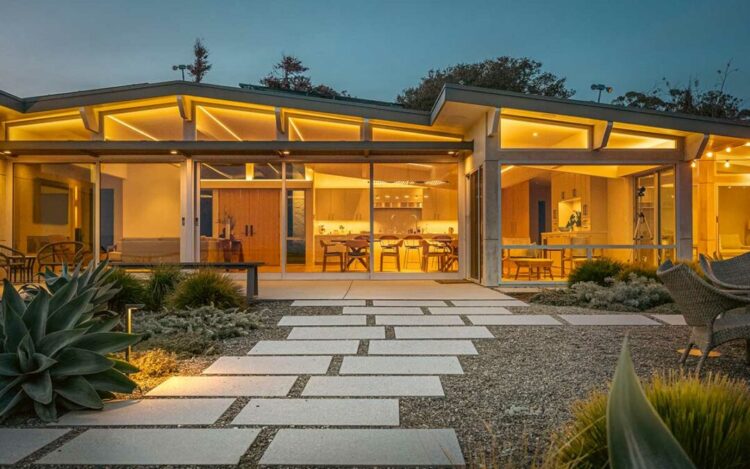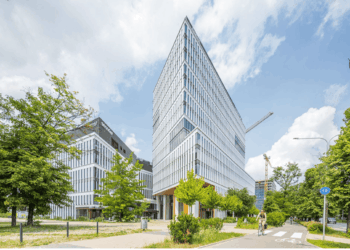Classic architecture endures as one of the most celebrated expressions of human creativity and ingenuity. Its lasting appeal lies not only in its striking beauty and intricate details but also in its timeless principles that continue to influence contemporary design. This article delves into the history, principles, and enduring impact of classic architecture while exploring how its legacy continues to shape the built environment worldwide. Throughout this discussion, we will examine historical context, core design elements, and modern interpretations of classic architectural forms, providing an in-depth look at why classic architecture remains a perennial favorite among architects, designers, and cultural enthusiasts alike.
Since the earliest periods of human civilization, architectural expression has been a reflection of societal values, technological advancements, and cultural identity. Classic architecture, with its roots in ancient Greece and Rome, represents more than just a style; it embodies the ideals of proportion, balance, and harmony. While modern architecture often embraces new materials and innovative construction techniques, the influence of classical design remains evident in many contemporary projects. As societies evolve, there is a growing recognition of the importance of preserving our built heritage and integrating timeless design principles into modern structures. In this article, we will explore how classic architecture is not only relevant but also an inspiring blueprint for today’s and tomorrow’s building practices.
Historical Background of Classic Architecture
Classic architecture emerged from the ancient civilizations of Greece and Rome, where architects and sculptors sought to create structures that were both functional and aesthetically pleasing. The foundations of classic design are built upon:
A. Symmetry and Proportion: Inspired by mathematical ratios and the belief that harmony in design reflects cosmic order, architects in ancient times used proportion as a guiding principle. This adherence to symmetry helped create buildings that exuded balance and order.
B. Use of Columns and Orders: Classical structures are easily recognized by their use of columns—Doric, Ionic, and Corinthian orders—each with distinct profiles and ornamentation. These columns not only provided structural support but also conveyed a sense of elegance and formality.
C. Emphasis on Geometry: The incorporation of geometric forms, such as circles, triangles, and rectangles, was central to establishing a sense of visual coherence. These shapes embodied ideals of perfection and served to elevate the architecture to a higher aesthetic plane.
D. Integration of Art and Architecture: Ancient architects considered their works as holistic creations where sculpture, painting, and ornamental detail converged. Temples, theaters, and public buildings were often adorned with intricate reliefs and statues, emphasizing the unity of art and function.
E. Urban Planning and Civic Spaces: Classic architecture was not limited to individual buildings; it extended into urban design. The ancient Greek agora and Roman forums were designed as open spaces where civic life and public discourse could thrive.
Over the centuries, the Renaissance and later neoclassical movements revived these ancient ideals, infusing new life into classic design. Architects such as Andrea Palladio, Robert Adam, and others reinterpreted classical principles to suit contemporary tastes and technological advancements, ensuring that the legacy of classic architecture continued to influence building design well into the modern era.
Defining Elements of Classic Architecture
The following elements are the cornerstones of classic architecture, each contributing to its enduring appeal:
A. Columns and Pilasters:
Columns: Often the most recognizable features, columns are used in facades, porticos, and interior spaces, offering both structural support and ornamental beauty.
Pilasters: These flattened, decorative columns are frequently employed in interiors and exteriors to provide visual rhythm and embellishment.
B. Entablatures and Cornices:
An entablature, typically divided into the architrave, frieze, and cornice, runs horizontally along the top of columns. This component not only unifies the architectural elements but also protects the structure from the elements.
C. Symmetry and Proportionality:
Symmetry is a hallmark of classic design, ensuring that every element of the structure is balanced. Proportionality, derived from mathematical relationships, defines the spatial harmony that classic architects strive for.
D. Ornate Ornamentation:
Intricate carvings, bas-reliefs, and moldings are common in classical buildings. These details often tell stories, celebrate mythological figures, or illustrate historical events, adding cultural depth to the architecture.
E. Arches and Domes:
The Roman legacy introduced the arch, a revolutionary element that enabled the construction of large-scale public buildings. Domes later emerged as symbols of grandeur, epitomized by structures like the Pantheon in Rome.
F. Use of Durable Materials:
Stone, marble, and concrete were primary materials in classic construction, chosen for their longevity, aesthetic appeal, and structural reliability.
G. Integration with Nature:
Classical design often emphasizes the relationship between built forms and the natural world. Gardens, courtyards, and open plazas are integrated seamlessly with structures, creating environments that encourage reflection and community interaction.
These elements are not only historical relics; they continue to inform modern architectural practices. Many architects today draw inspiration from classical motifs, integrating these timeless features into new designs that blend the old with the new.
The Influence of Classic Architecture on Modern Design
Classic architecture has had a profound impact on modern architectural thought and practice. While contemporary architecture frequently champions innovation and futuristic aesthetics, the fundamental principles of classic design are frequently reintegrated into new projects. Here are some ways in which classic architecture shapes modern design:
A. Foundation for Educational Institutions:
Many architectural schools and professional training programs emphasize classical design principles. The study of symmetry, proportion, and ornamentation lays a solid groundwork for budding architects. Students are encouraged to analyze how historical forms work harmoniously and how they can be adapted to modern needs.
B. Urban Regeneration Projects:
In cities where rapid modernization may threaten cultural heritage, urban planners and architects often employ classical elements to preserve historical identity. Restoration projects frequently integrate new technologies while carefully maintaining a building’s original character.
C. Inspiration for Contemporary Public Buildings:
Government structures, museums, and cultural centers are often designed with classical influences. The use of columns, domes, and ornate detailing lends these buildings an air of majesty and authority, reinforcing their role as important public landmarks.
D. Sustainable Design:
Classic buildings, many of which have stood for centuries, exemplify durability and sustainability. Modern architects are increasingly inspired by traditional construction techniques that emphasize low maintenance, energy efficiency, and ecological integration. By blending time-tested methods with contemporary sustainability practices, architects can create buildings that are both resilient and environmentally friendly.
E. Design Aesthetics and Identity:
In an increasingly digital world, classic architecture offers a tangible connection to the past. Its enduring aesthetic resonates with those who value continuity, tradition, and cultural heritage. Modern designers frequently incorporate classical elements to create a sense of stability and timelessness amid rapid technological change.
In essence, classic architecture serves as a bridge between historical tradition and future innovation. It allows modern architects to reflect on the lessons of the past, ensuring that new buildings remain imbued with the beauty and balance that have defined great architecture for centuries.
The Enduring Allure of Classic Architecture
The sustained popularity of classic architecture can be attributed to several interrelated factors. Its charm is not limited to visual aesthetics but extends to the philosophies that underpin its design:
A. Timeless Beauty:
The elegant symmetry, balanced proportions, and detailed ornamentation inherent in classic architecture create a visual appeal that transcends time. This beauty is appreciated regardless of changing trends or technological advancements.
B. Cultural and Historical Connection:
Classic buildings often serve as physical embodiments of a society’s history and cultural identity. They remind us of the values, beliefs, and artistic achievements of earlier generations and act as a tangible link to our past.
C. Resilience and Longevity:
Constructed with materials and techniques designed for endurance, classic structures have weathered centuries of use and change. Their longevity underscores a commitment to quality and sustainability, often serving as models for contemporary construction methods.
D. Versatility in Adaptation:
Classic architecture is remarkably adaptable, able to merge with modern design through careful reinterpretation. Whether it is through adaptive reuse projects or new constructions that mimic classical forms, the principles of classic design remain relevant.
E. Timeless Quality in Materials and Craftsmanship:
The meticulous craftsmanship and robust materials used in classic construction contribute significantly to their longevity. These techniques, honed over millennia, are a testament to the ingenuity and skill of past generations, serving as invaluable lessons for modern builders.
F. Emotional and Psychological Impact:
Classic architecture often evokes a sense of awe and reverence. The grandeur of columns, arches, and dome ceilings inspires feelings of respect and admiration, reminding us of our shared cultural heritage and the human capacity for creativity.
G. Architectural Sustainability:
The use of passive design strategies in classic buildings—such as natural ventilation, thermal mass, and strategic placement of windows—often results in structures that are inherently energy-efficient. This sustainability has become a critical consideration in modern architecture, where there is growing interest in reducing environmental impact.
Notable Examples of Classic Architecture
Across the globe, numerous iconic structures stand as testaments to the enduring appeal of classic design. These examples not only highlight the aesthetic principles of classic architecture but also illustrate how these forms continue to influence modern building practices. Some notable examples include:
A. The Parthenon (Athens, Greece):
Built in the 5th century BC, the Parthenon is perhaps the quintessential example of classical Greek architecture. Its perfect proportions, intricate sculptures, and enduring beauty have inspired countless generations of architects and scholars.
B. The Pantheon (Rome, Italy):
Renowned for its massive dome and oculus, the Pantheon stands as a marvel of Roman engineering. Originally built as a temple to all gods, its innovative design and sophisticated use of space have influenced architectural theory for centuries.
C. The Colosseum (Rome, Italy):
Although primarily known as an amphitheater, the Colosseum’s grandeur and ingenious design reflect classical architectural principles, combining both utility and monumental artistry in its form.
D. Palace of Versailles (Versailles, France):
An epitome of classical French elegance, the Palace of Versailles showcases symmetrical gardens, ornate facades, and lavish interiors that continue to set the standard for royal architecture.
E. St. Paul’s Cathedral (London, England):
With its magnificent dome and classical portico, St. Paul’s Cathedral integrates Renaissance and classical elements, symbolizing both spiritual aspiration and national pride.
F. The White House (Washington, D.C., USA):
The official residence of the U.S. president, the White House exhibits a blend of classical influences with colonial American designs, reflecting democratic ideals and historical continuity.
These examples serve as compelling reminders of the lasting impact that classic architectural principles have had on the world. Each structure, whether ancient or modern, continues to captivate viewers with its blend of form, function, and artistic expression.
The Relevance of Classic Architecture in Today’s World
In today’s fast-paced and technology-driven era, one might assume that modern designs would dominate the architectural landscape. However, classic architecture remains highly relevant for several key reasons:
A. Historical Continuity:
Classic architecture serves as a historical anchor, offering a sense of continuity amidst rapid change. Many modern cities are now witnessing a renaissance in classic design, with architects and developers striving to blend contemporary functionality with historical aesthetics.
B. Architectural Integrity and Quality:
In an age where mass production and cost-cutting are prevalent, classic architecture reminds us of the importance of integrity and quality craftsmanship. The attention to detail and commitment to excellence that characterized classic buildings set a high standard for contemporary construction.
C. Emotional Resonance:
Classic architecture has a unique ability to evoke emotions and create memorable experiences. The grandeur of a classical building, with its stately columns and intricate detailing, often leaves an indelible impression on those who experience it. This emotional connection is invaluable in an increasingly digital and impersonal world.
D. Adaptability and Reuse:
Many historic buildings have been successfully adapted for modern use. Through sensitive restoration and adaptive reuse, these structures are given new life while preserving their original character. This approach not only saves resources but also fosters an appreciation for cultural heritage.
E. Educational Value:
Classic architecture provides an important learning opportunity for both professionals and the public. Studying historic buildings helps contemporary architects understand principles that can be applied to create resilient, efficient, and aesthetically pleasing structures.
F. Community Identity:
Historic neighborhoods and public spaces anchored by classic architecture contribute significantly to a community’s identity. Preserving these landmarks maintains a sense of place and continuity that is essential for cultural and social cohesion.
G. Sustainable Practices:
In many respects, classic architecture embodies sustainable practices that are now being echoed in modern green design. The use of natural light, passive ventilation, and durable materials are strategies that help reduce the environmental footprint of buildings.
H. Aesthetic Diversity:
The integration of classic elements within modern designs enriches the built environment. A fusion of traditional and contemporary styles can create visually engaging spaces that cater to diverse tastes while honoring the artistic achievements of the past.
How Classic Architecture Inspires Future Generations
The lasting influence of classic architecture goes beyond mere aesthetics; it also inspires innovation and creativity in modern design:
A. Revitalizing Urban Landscapes:
Urban planners and architects are increasingly drawing upon classical design elements to revitalize public spaces. Revived areas that blend new infrastructure with classic elements create urban landscapes that are both functional and inspiring.
B. Promoting Cultural Tourism:
Historic buildings and neighborhoods attract tourists from around the world, serving as cultural ambassadors that tell the story of a city’s past. This cultural tourism not only drives economic growth but also fosters greater appreciation for architectural heritage.
C. Incorporating Adaptive Technologies:
Modern technology has opened up new possibilities for merging classic design with contemporary innovation. For instance, digital tools allow architects to model and analyze classical proportions with unprecedented precision, leading to designs that honor tradition while embracing modern efficiency.
D. Design Competitions and Academic Discourse:
Architectural competitions and academic research frequently highlight the interplay between historic forms and modern design challenges. This ongoing discourse spurs the development of new ideas that are rooted in the wisdom of classic practices.
E. Innovative Material Use:
Today’s architects explore new materials that mimic the durability and aesthetics of traditional construction. Research into high-performance materials inspired by classic stone and masonry techniques promotes the creation of buildings that are both resilient and visually timeless.
Challenges and Opportunities in Preserving Classic Architecture
Preserving the legacy of classic architecture is not without challenges. However, each challenge presents an opportunity to innovate and reframe how we interact with our built heritage:
A. Maintenance and Restoration:
Restoring historic buildings to their original splendor demands significant expertise and financial investment. Innovative conservation techniques and sustainable restoration methods are essential to maintain these structures for future generations.
B. Balancing Modern Needs with Historic Integrity:
Integrating modern amenities and safety standards into classic structures requires careful planning. Adaptive reuse projects often face the challenge of preserving the original character while incorporating contemporary functionalities.
C. Urban Development Pressures:
Rapid urbanization and economic growth can threaten the preservation of historical sites. Urban planners and policymakers must work collaboratively to ensure that new developments do not compromise the integrity of classic architecture within historic neighborhoods.
D. Educational Outreach:
Public awareness and appreciation for classical design principles are vital for successful preservation. Educational programs, guided tours, and cultural events help foster a deeper understanding of the historical and artistic value of classic architecture.
E. Leveraging Technology:
Digital documentation, 3D scanning, and virtual reality reconstructions offer innovative solutions for preserving the details of historic buildings. These technologies not only aid in restoration but also provide immersive educational experiences for future architects and historians.
Despite these challenges, the preservation of classic architecture represents a significant opportunity to blend history with innovation. Successful conservation projects serve as models for how we can maintain our architectural heritage while fostering growth and modernization.
The Future: Embracing a Hybrid Architectural Vision
Looking ahead, the future of architecture appears to be a harmonious blend of classic principles and modern innovations. As society faces new challenges such as climate change, technological disruption, and rapid urbanization, the timeless lessons of classic architecture are proving more relevant than ever. The synthesis of historical wisdom with cutting-edge technologies points to a future where:
A. Sustainability and Heritage Coexist:
Future projects are increasingly incorporating eco-friendly materials, renewable energy sources, and passive design elements inspired by classic construction methods. This balanced approach ensures that sustainable living does not come at the expense of historical beauty.
B. Cross-Disciplinary Collaboration:
Architects, historians, engineers, and urban planners are coming together to create innovative solutions that respect historical context while embracing future advancements. Collaborative projects that celebrate classic design through modern reinterpretation are leading the way toward culturally rich, resilient urban spaces.
C. Digital Revitalization of Historic Sites:
Virtual and augmented reality technologies offer unprecedented opportunities to experience classic architecture in new ways. Digital reconstructions allow the public to explore historical buildings, gain deeper insights into architectural methods, and appreciate the nuances of classical design without physical limitations.
D. Educational Initiatives:
Academic institutions and cultural organizations are investing in programs that emphasize the importance of classic architecture. These initiatives educate future generations on the value of heritage while encouraging innovative thinking that respects the legacy of the past.
E. Economic Benefits:
Revitalizing historic sites through adaptive reuse and sustainable renovation projects provides significant economic benefits. Cultural tourism, community revitalization, and urban regeneration projects stimulate local economies and create lasting value.
The convergence of classic architecture with modern design philosophies promises a future where the built environment is not only functional and efficient but also steeped in cultural and historical significance.
Conclusion
Classic architecture remains a timeless choice because it embodies the ideals of beauty, balance, and durability. Throughout this exploration, we have examined the profound influence of classic architecture—from its historical origins in ancient civilizations to its continued relevance in modern design. Its core principles of symmetry, proportion, and ornamentation continue to resonate with contemporary architects, providing a solid foundation for creating structures that stand the test of time.
By preserving and adapting traditional architectural elements in today’s urban landscapes, designers are not only honoring the past but also forging a path toward a sustainable and culturally rich future. The enduring appeal of classic architecture lies in its ability to inspire, educate, and connect people across generations. As we continue to face modern challenges, the wisdom of classic architectural design serves as a guiding light—a testament to humanity’s everlasting pursuit of excellence and beauty in the built environment.
In embracing a hybrid vision that marries timeless design with modern innovation, we can ensure that the legacy of classic architecture will continue to shape the aesthetics, functionality, and sustainability of our cities for centuries to come.











